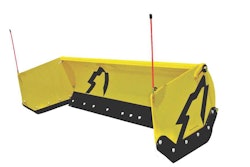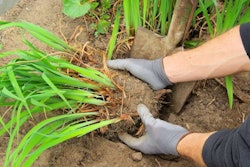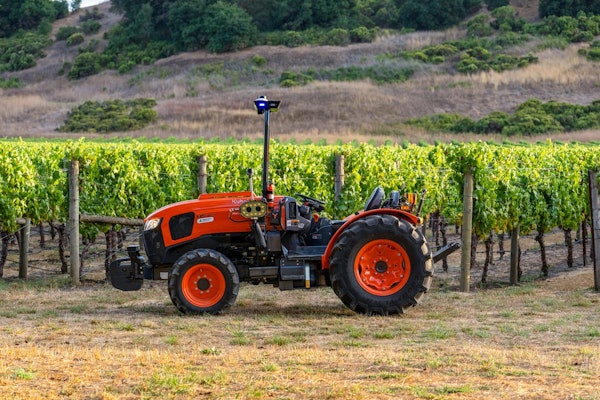 Buffalo Public School 197 features a mini ecosystem for the faculty to use along with their lessons.
Buffalo Public School 197 features a mini ecosystem for the faculty to use along with their lessons.Photo: Joy Kuebler Landscape Architect
The route one takes to find a career can be circuitous, and that was the case for landscape architect Joy Kuebler.
Kuebler started out majoring in engineering and then switched to interior design; but, while she loved the creativity of design, she found working interiors very limiting. When a friend suggested working on a project that involved designing a park, Kuebler met with the landscape architect and knew she had found her calling.
 Joy Kuebler
Joy KueblerDuring an internship under landscape architect Fred Holman, Kuebler got to be part of the movement that helped Buffalo, New York, reclaim some of its abandoned industrial spaces for new purposes.
“People hadn’t thought about land being used recreationally or as a support for habitat,” she said. “Just because a landscape is something in its current state doesn’t mean it can’t be something else to provide a different use. Land is very powerful.”
After graduating from Cornell University in 1997 with a degree in landscape architecture, she worked under several architectural firms before founding her own in 2003.
“I learned an incredible amount from the firms that I worked for, but I still felt limited,” Kuebler said. “I was always feeling that there was more that we could be adding to the quality of life. I felt there were more opportunities on my own to be as dynamic and as crazy as I wanted to be.”
Kuebler had also started a family so she was ready to be more in control of her life. Her firm employs seven and is still based out of her house, although they are preparing for a move.
“We’re hoping to move to a historic structure that needs some love and care and will also allow us a lot of space to grow,” she said.
One of the most important things Kuebler says she learned from her time at other firms is understanding the business side of things.
“Going through school you learn your craft, but not your business or the backstory,” Kuebler said. “There is so much more to the project than just the design solution.”
Kuebler and her firm have gone on to win many awards. Her restoration of historic Schoellkopf Park, which is adjacent to Niagara Falls Memorial Medical Center, earned a Landscape Preservation Award from Preservation Buffalo.
 Schoellkopf Park was restored to its former beauty thanks to Kuebler and her team
Schoellkopf Park was restored to its former beauty thanks to Kuebler and her teamPhoto: Joy Kuebler Landscape Architect
The American Society of Landscape Architects, NY Upstate Chapter, presented Kuebler’s firm with an honor award for built design after the team created a unique learning environment at Buffalo Public School 197.
Kuebler and her team knew they wanted to incorporate the curriculum of math, science and technology into the courtyard for students from 5th to 12th grade to explore. This led them to create an ecosystem model with miniature environments of a pond, stream, rain garden, field, forest and a mountain.
Rather than limit herself to one niche of landscape architecture, Kuebler likes to do a little bit of it all, from residential to corporate, college campuses to community spaces.
“I love where I’m melding people and the environment,” she said. “When I can see people in a neighborhood or a community smiling every day because of the impact we made, that is my favorite. The greater the public impact … (those) are the ones I enjoy the most.”
Being actively involved in the community, Kuebler is also co-founder of Pop Up Park Buffalo, a nonprofit organization that creates temporary safe places for children to experience free play. Children are provided with the tools and materials and set loose to be as creative as they like.
“Pop up parks can empower a generation of kids who have lost their power,” Kuebler said. “It allows kids to think like designers and engineers and problem solvers.”
Another form of pop up parks Kuebler and her team participates in allows the community to try on a design for size without having to invest a large amount of money first. On Wednesday, for example, the firm will transform a block of a busy waterfront into a mini boutique. Food trucks and shop owners will participate to change the character of the space.
 People were able to unwind for a few minutes at last year’s PARK(ing) spot.
People were able to unwind for a few minutes at last year’s PARK(ing) spot.Photo: Joy Kuebler Landscape Architect
“Afterward, we’ll have a party to interview the public and ask questions like, ‘How important is this street to you?’ – questions we would love to ask at a public meeting will be asked in this fun environment,” Kuebler said.
By loosening up and creating engaging, fun atmospheres, Kuebler is able to get individuals to let their guard down and be open and honest about their needs and concerns.
She’s also looking forward to participating in PARK(ing) Day, which transforms parking spots into green spaces, on Sept. 16. Last year her team was located at the Buffalo Niagara Medical Campus and they constructed a swing for people to use.
“People would say they had no time to swing, but we would tell them it would be the best two seconds of their day,” she said. “It was like their whole bodies changed. We’ve been asked to come back again. We won’t do the swing again; it’ll be something else. We never do things twice.”









